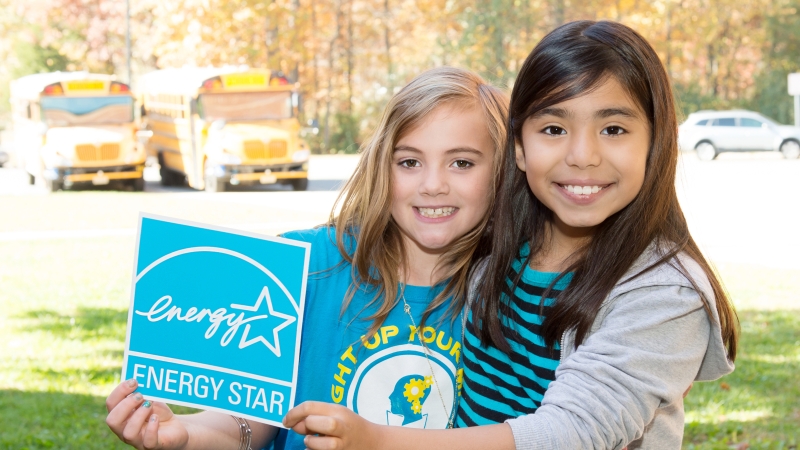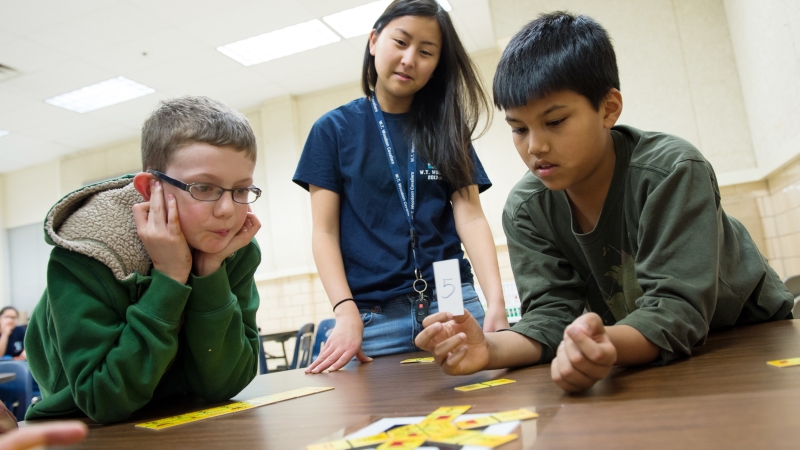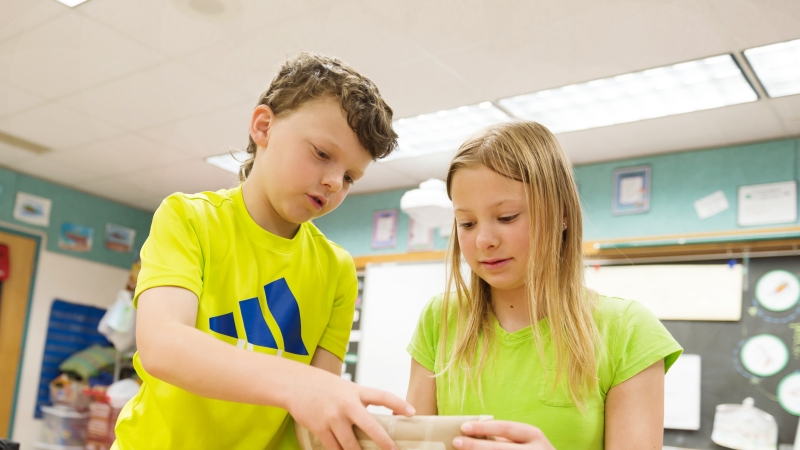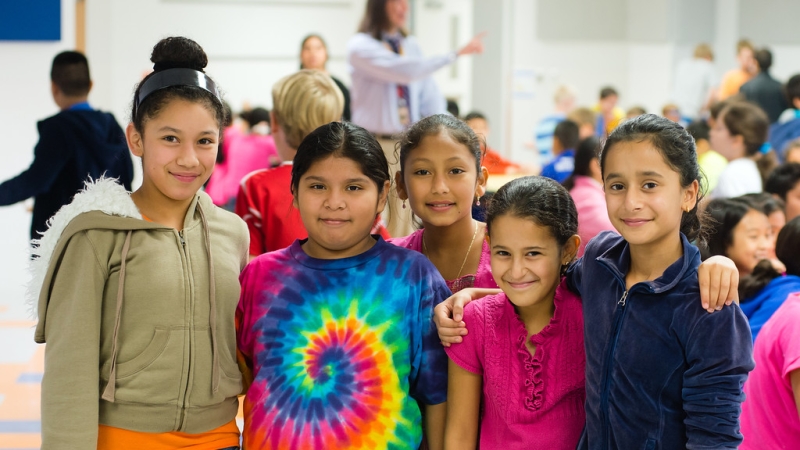
Middle School Science
Middle school science requirements
Courses
Laboratory Requirements
Central to the design of the curriculum is the philosophy that the middle school science student should be engaged in laboratory work during at least fifty percent of class time. This time frame includes pre-laboratory preparation and post-laboratory analysis. Laboratory work is the vehicle by which students come to understand life science concepts, learn and apply the skills of inquiry, and acquire an enthusiasm for learning science. While important in developing student understanding, demonstrations, audiovisual presentations, reinforcement and practice activities, and supplemental reading cannot be considered a substitute for laboratory experiences. These kinds of activities should not be counted within the science laboratory time.
A science laboratory experience is characterized by the following:
- An individual student or small group of students manipulating science equipment for the purpose of conducting an investigation requiring an interpretation of observations and data.
- An individual or small group of students engaged in experimental design that involves defining a problem, formulating hypotheses, and establishing procedures for the collection of verifiable data.
- An individual or small group of students conducting an investigation which involves making observations, recording data from the observations, analyzing the data collected, formulating conclusions, and preparing a final report.
An individual or small group of students engaged in computer-based laboratory investigations. For a computer-assisted laboratory investigation to be considered as a laboratory activity, the program should include some of the following:
- The development of scientific skills, such as making observations, collecting data, organizing and analyzing data, predicting, and inferring.
- The opportunity to change the parameters of the results to observe and predict the effect upon the system being investigated.
- Experimental investigations that generate or access appropriate data, display the data, and require students to analyze the data to form valid conclusions.
Field studies in which individual students participate in observations, data collection, and analysis of samples of materials.
Technology
As stated in the Science Standards of Learning for Virginia Public Schools, the use of current and emerging technologies is essential to the K-12 science instructional program.
Computer/Technology standards to be achieved by the end of Grade 8 have been developed in the Virginia Standards of Learning and are the shared responsibility of teachers of all disciplines. Middle science school students are expected to become adept at using the compound microscope, triple beam balance, computer, printer, digital camera, probeware, LabQuest, and other forms of hardware.
In addition, students should become competent using software designed for the following applications: word processing, graphing, manipulating databases, simulations, Geographic Information Systems (GIS), telecommunications, and multimedia presentations. The most common configuration is a networked science classroom consisting of 15 student stations and one teacher presentation station. All middle school science students use technology during each unit throughout the year.
Classroom Assessment Methods
Instruction can be effective only if classroom assessments accurately reflect student achievement. For this reason, those concerned with the quality of instruction must also be concerned with the quality of assessment. Assessment should be a systematic, multi-step process involving the collection and interpretation of educational data on student progress. Student performance guides what teachers should teach, reflects what students have learned, and indicates what students need to learn.
In the past, many instructors evaluated their students’ understanding of a scientific concept with a traditional, multiple-choice, pencil and paper test. Today, teachers use a variety of classroom assessment methods to probe the extent and organization of their students’ knowledge. The choice of specific assessment methods should match the kind of knowledge – conceptual or procedural – we are assessing. Conceptual knowledge refers to what we want students to understand (concepts, principles) and procedural knowledge refers to what we want students to be able to do (skills, processes, strategies.)
Classroom assessment methods in science include the following:
1. Selected Response
Student selects either the correct or best answer from among the options given. This method can assess mastery of conceptual or procedural knowledge.
Examples of selected response include multiple choice, true-false, and matching.
2. Constructed Response
Student communicates a brief response, usually written, to questions, problems, or prompts. This method can assess big concepts, generalizations, and relationships among elements of conceptual knowledge. It can provide insight into a student's reasoning ability. A performance check list or rubric can be used to "score" the response.
Examples of constructed response include asking students to graph experimental data and describe the pattern or trend that is evident, create a concept map or web of a science topic, or make a labeled diagram to illustrate and explain the role of green plants in the process of photosynthesis, asking students to "show and explain their work" on a density calculation problem, or make a labeled diagram to illustrate and explain the three ways thermal energy is transferred.
3. Performance-Based Assessments
A. Performance Task
Student creates a product or performs a demonstration that illustrates how he or she can apply conceptual knowledge and procedural skills to carry out steps in the development of the specified product or task. It can assess both conceptual and procedural knowledge. Evaluations of student products are based on judgments guided by criteria. Rubrics and performance checklists are often used as scoring tools.
Examples of a performance task include having students write a newspaper editorial defending a position on curtailing harvesting of the Chesapeake Bay blue crab; design an experiment to determine the limiting factors on the germination of a particular kind of seed; create a trade book on using the microscope to compare a plant and a animal cell for a fifth grade student; create a multimedia presentation for Earth Day on the interdependence with the biosphere, write a newspaper editorial defending a position on the use of nuclear energy for generating electricity; design an experiment to determine the effect of different kinds of insulating materials on thermal energy loss; create a trade book on "atoms and elements" for sixth grade students; conduct an experiment to identify an unknown substance based on its properties; create a multimedia presentation for National Science and Technology Week on the interdependence of science, technology, and society in some aspect of the nanotechnology program.
B. Portfolio
Representative samples of student work are purposefully collected over time. This can be used to show student effort, progress or achievement in a given area.
Example of a portfolio includes asking students to keep a record of different investigations or lab reports over time to see progress in ability to make qualitative and quantitative observations, organize and analyze information, and communicate results of an investigation.
C. Teacher Observations, Questioning, and Conferencing
The teacher observes the student during an activity or asks questions to learn about a student’s thinking process relevant to conceptual or procedural knowledge. These provide valuable feedback information to teachers and to students so that adjustments to instruction can be made.
Examples of teacher observations, questioning, and conferencing include observing students in a lab situation to determine their ability to follow a written procedure, the use of the "think aloud" technique to evaluate a student’s ability to make a wet mount slide and focus the image under a microscope or to use a triple beam balance to find the mass of an object, posing oral questions to assess a student’s understanding of a difficult section in the science textbook, or conferencing with a student to learn what they know about a particular concept and what questions they might still have.
D. Student Self-Assessment
The student self-assesses the quality of a performance, product, or process he or she used. This method allows students to keep track of their own progress through criteria established by the student and teacher. This also enables students to be part of the learning experience, and take ownership in understanding the goals and criteria for success related to conceptual and procedural learning goals.
Examples of student self-assessment include allowing students to use a check list for assessing the quality of a graph they produced: or after completing a series of lessons on heredity, asking students to write in a learning log the concepts which they found most understandable and those which they still do not understand completely.
Student Resources
General Science
7th Grade Science
Cells
Exploring Heredity and Diversity
Understanding Populations and Ecosystems
Chesapeake Bay
Eighth Grade Science
Matter and Energy
Periodic Table
Atoms
Chemical Reactions--Acids and Bases
Investigating Matter and Temperature
Investigating Motion, Forces, and Energy
Science Safety Agreements
Science Safety Agreements are available below. The purpose of the Safety Agreement is to provide information for students and their guardians about safety in the science laboratory. Students and their guardians should read and sign the agreement prior to participating in science laboratory activities and return the signed copy to the school.
Agreements:
- MS Science Student Safety Agreement
- MS Science Student Safety Agreement (Amharic)
- MS Science Student Safety Agreement (Arabic)
- MS Science Student Safety Agreement (Chinese)
- MS Science Student Safety Agreement (Farsi)
- MS Science Student Safety Agreement (Korean)
- MS Science Student Safety Agreement (Spanish)
- MS Science Student Safety Agreement (Urdu)
- MS Science Student Safety Agreement (Vietnamese)





